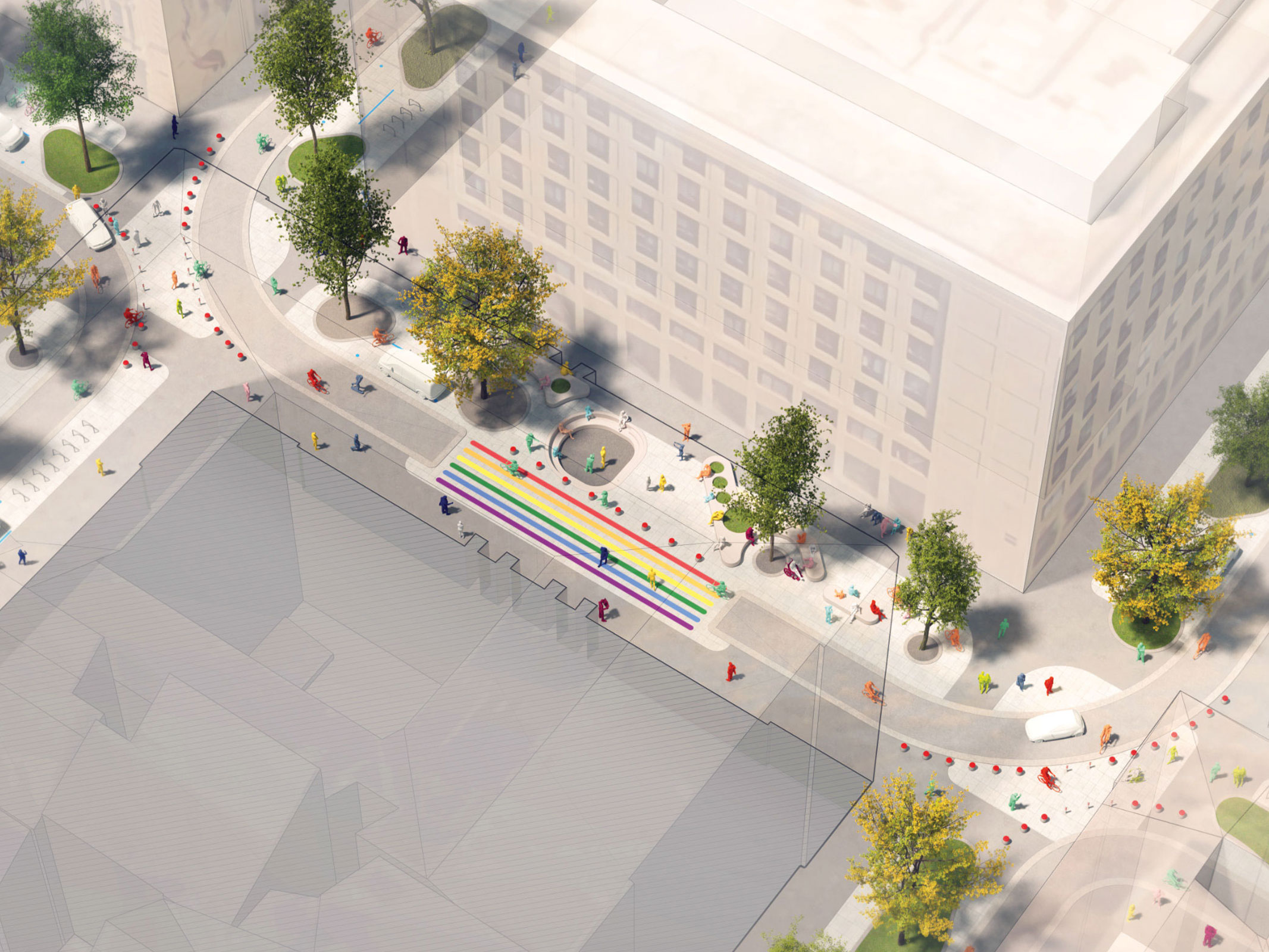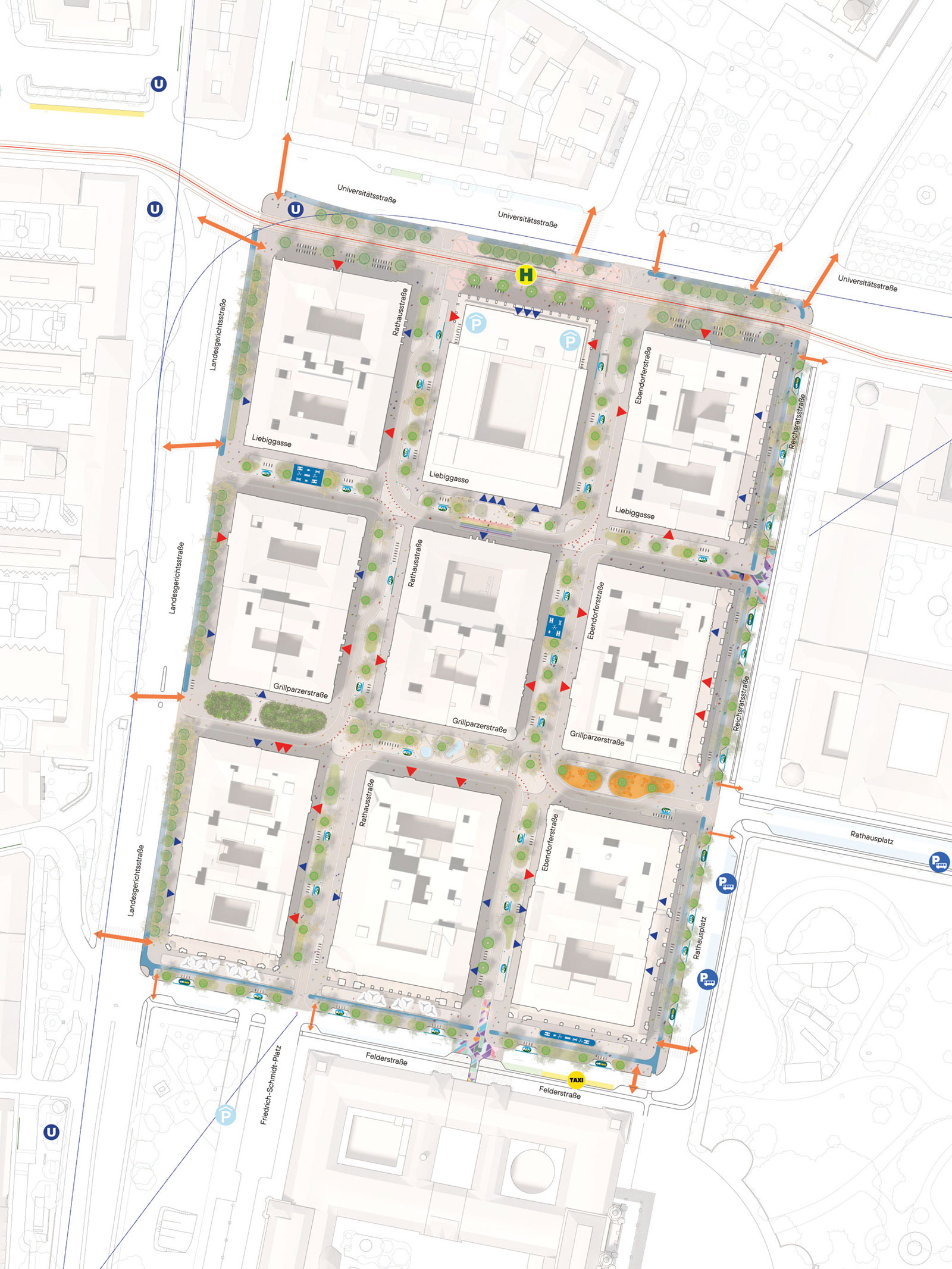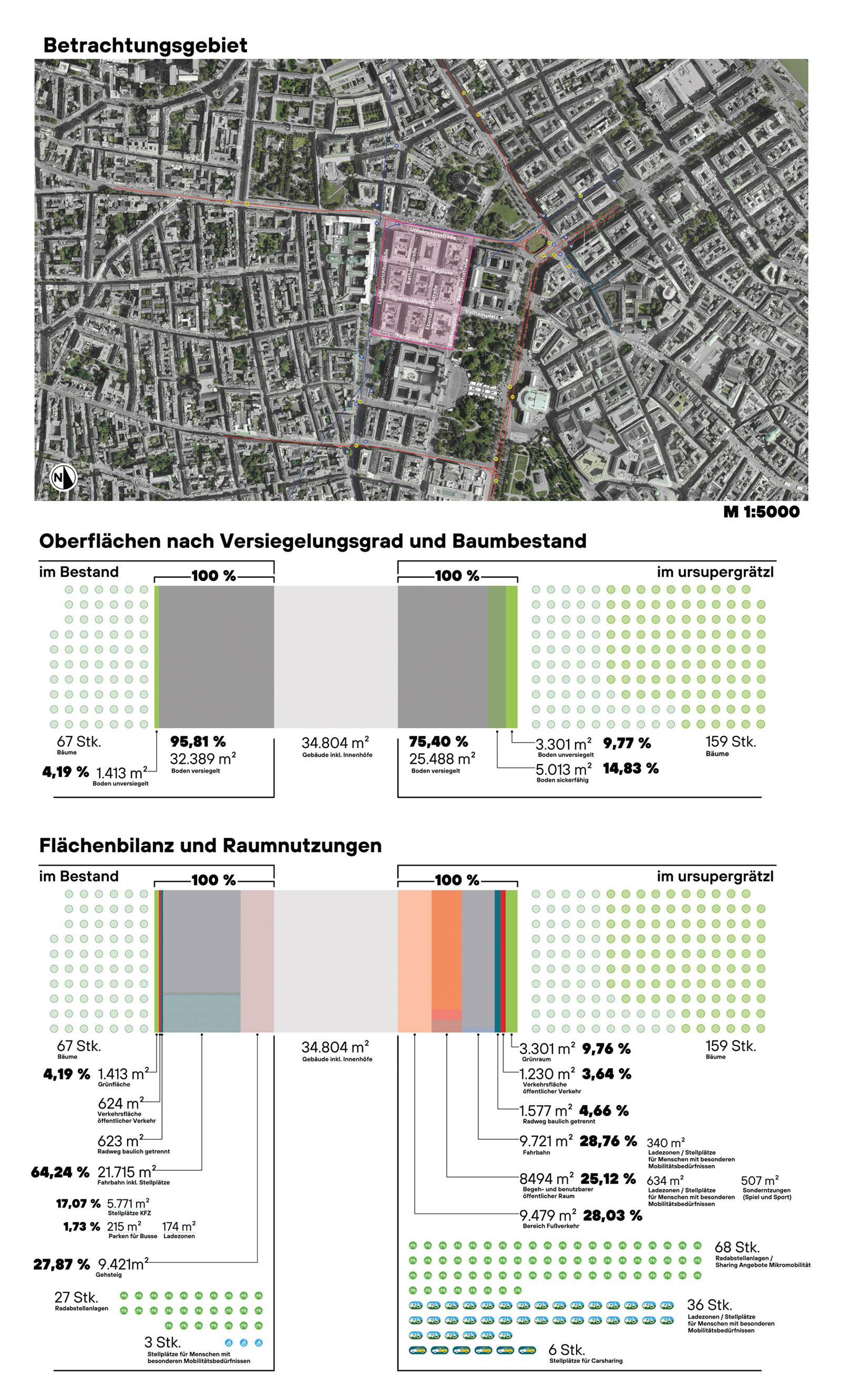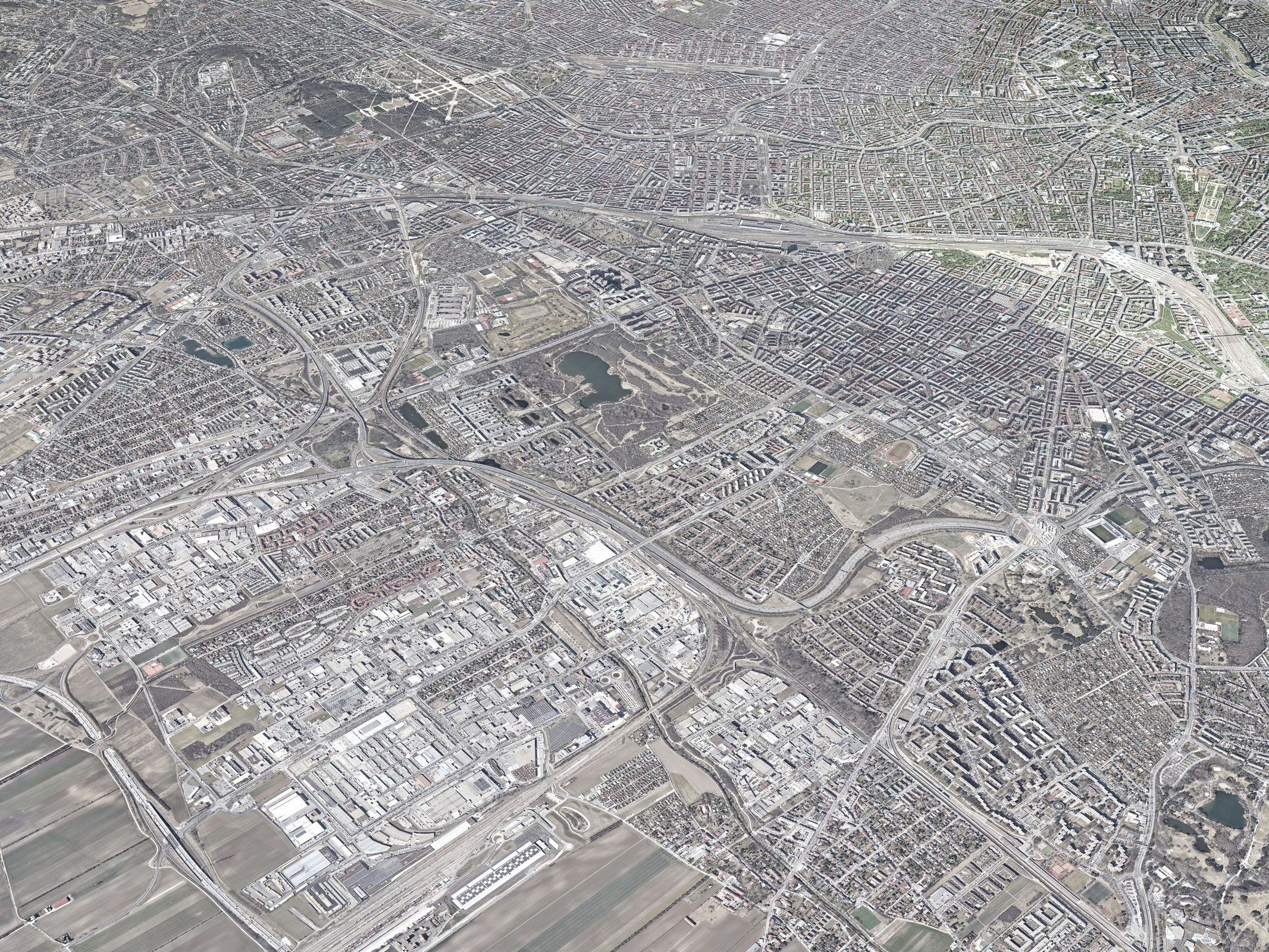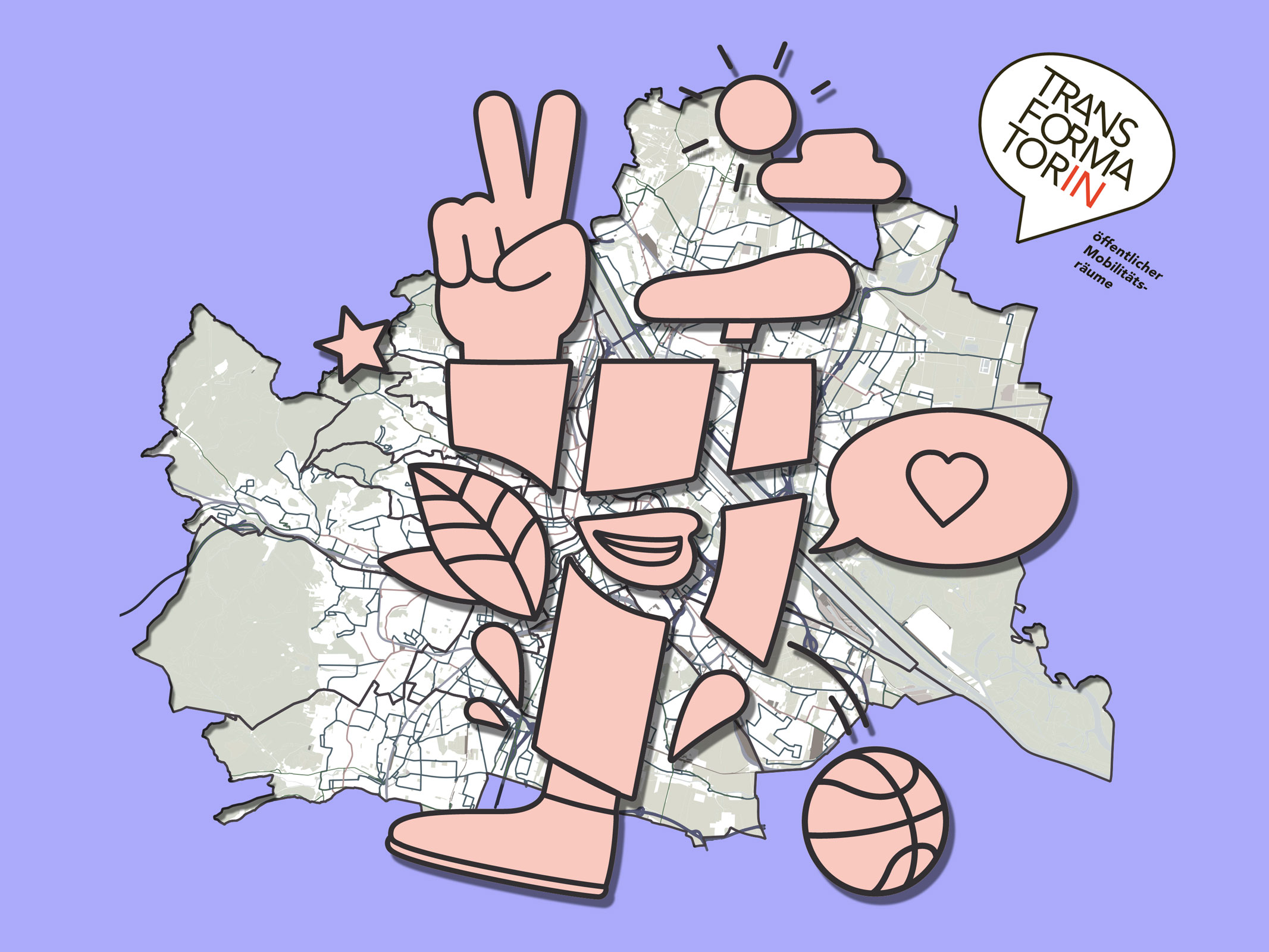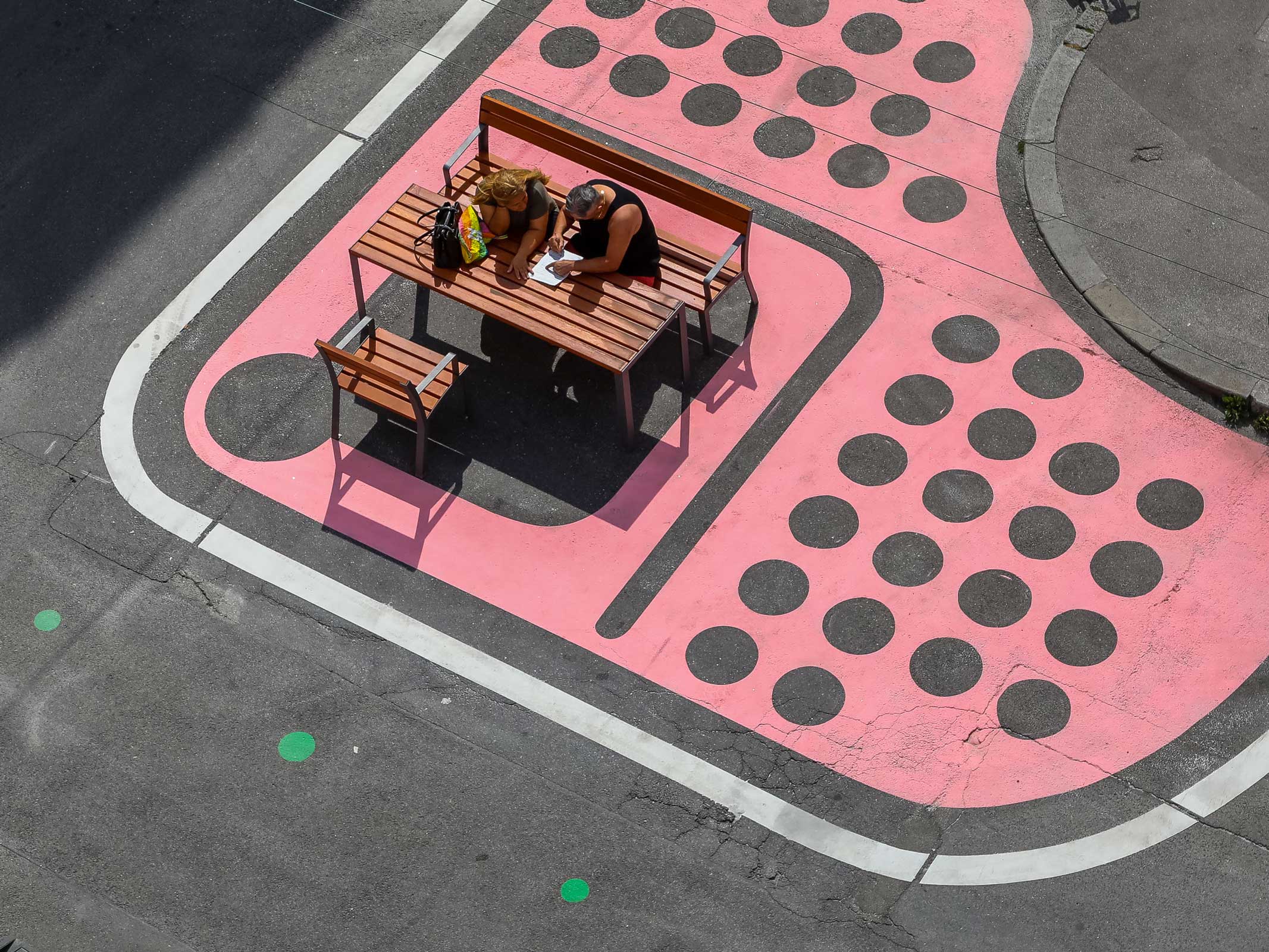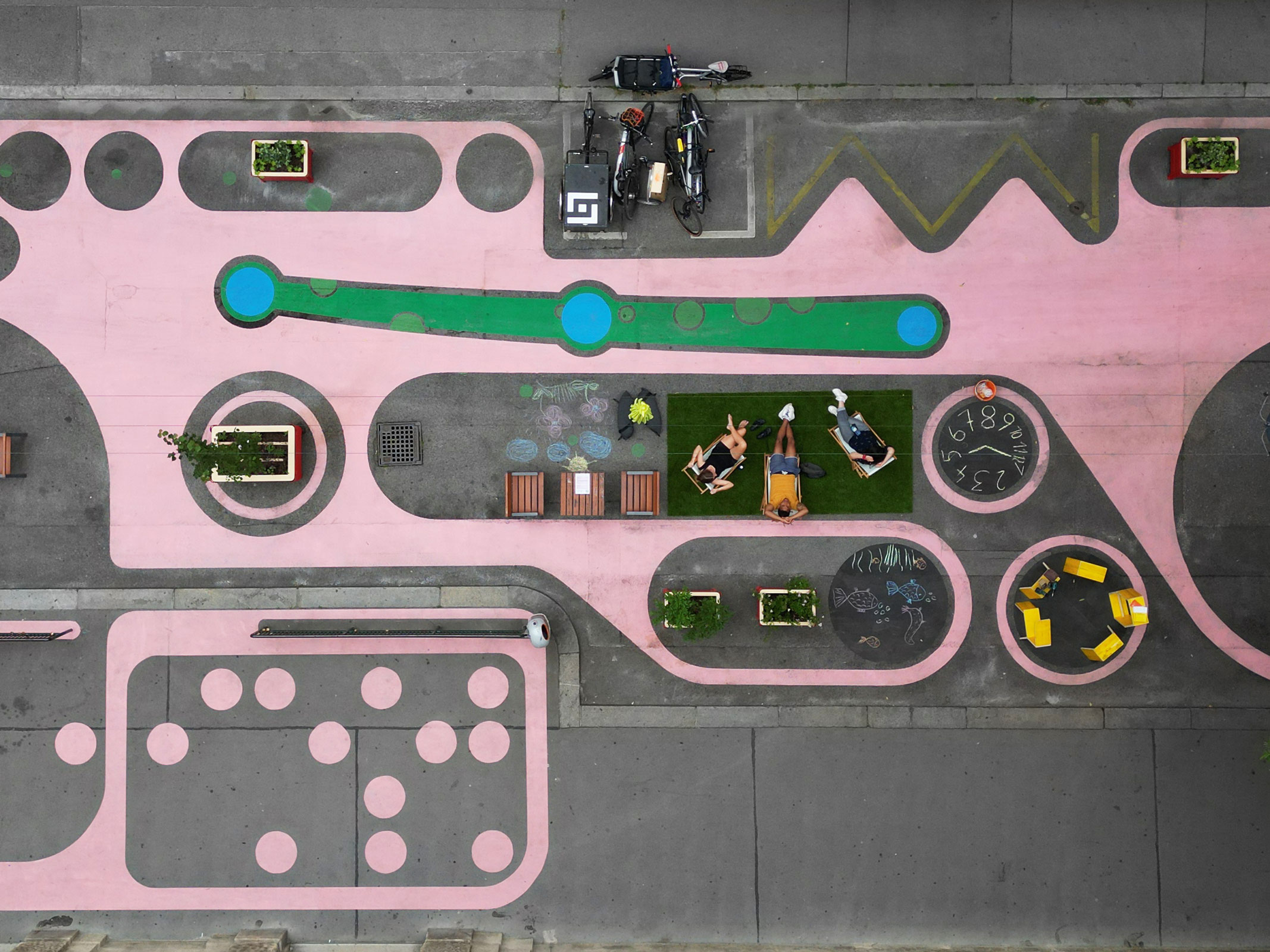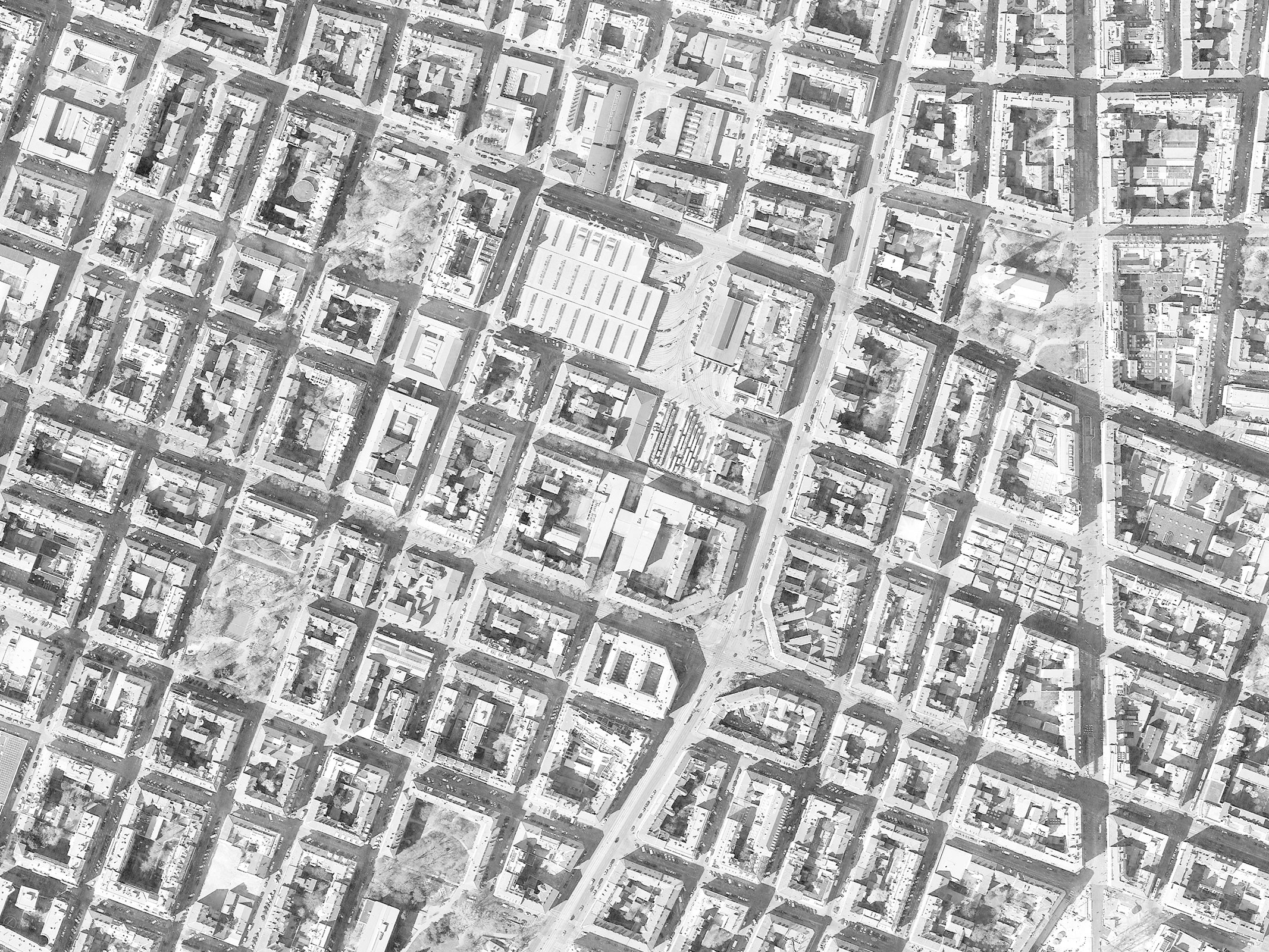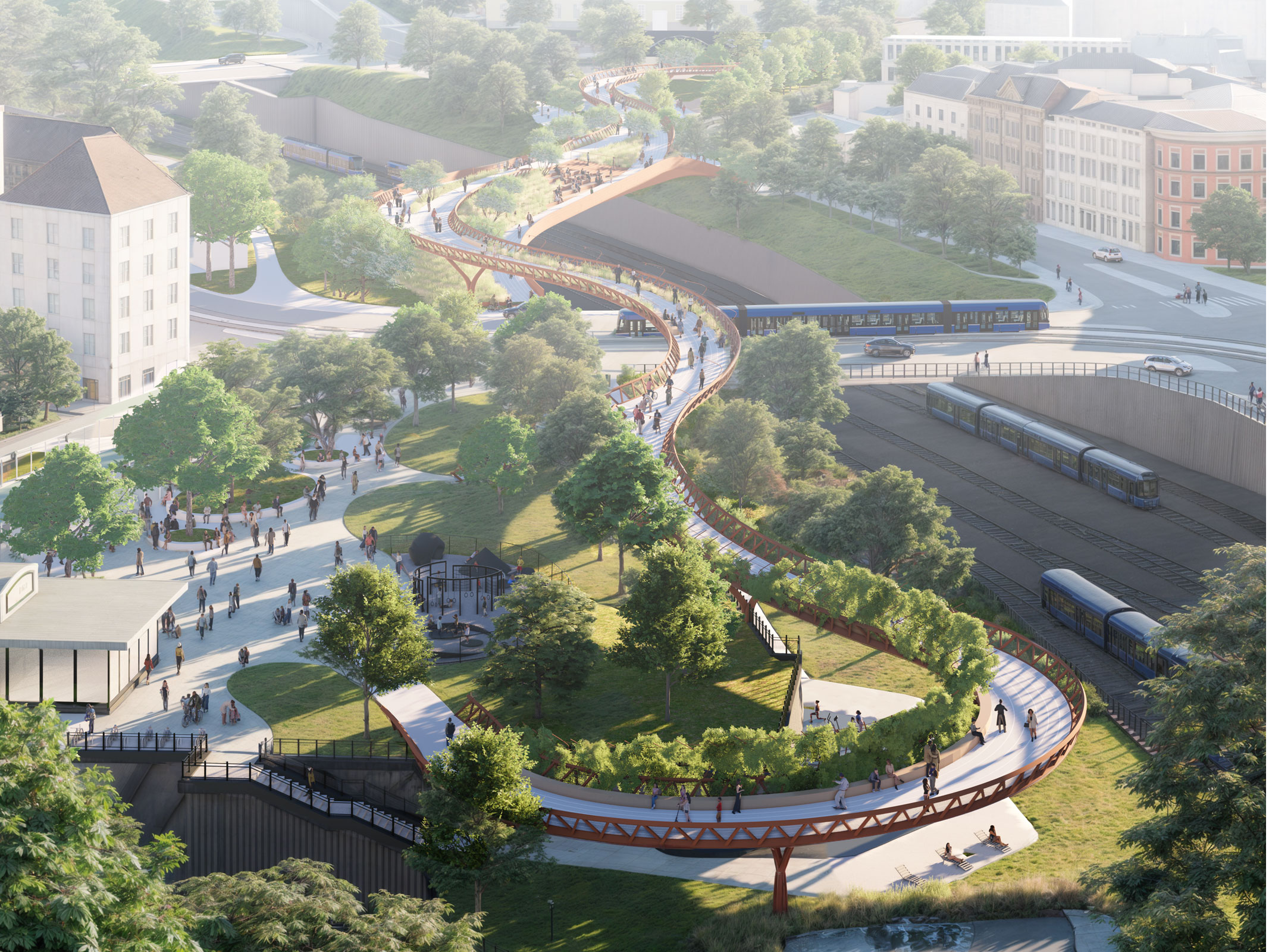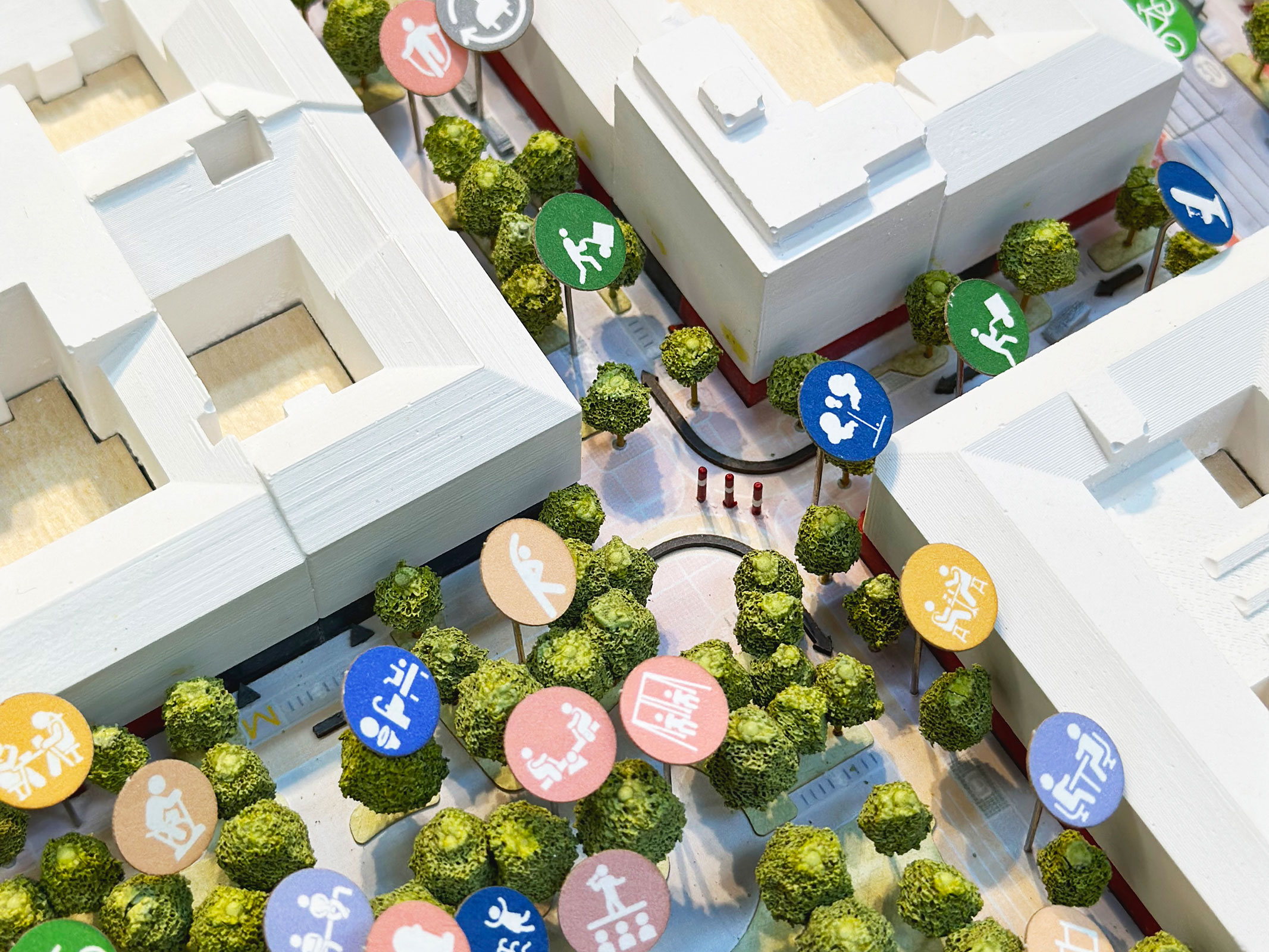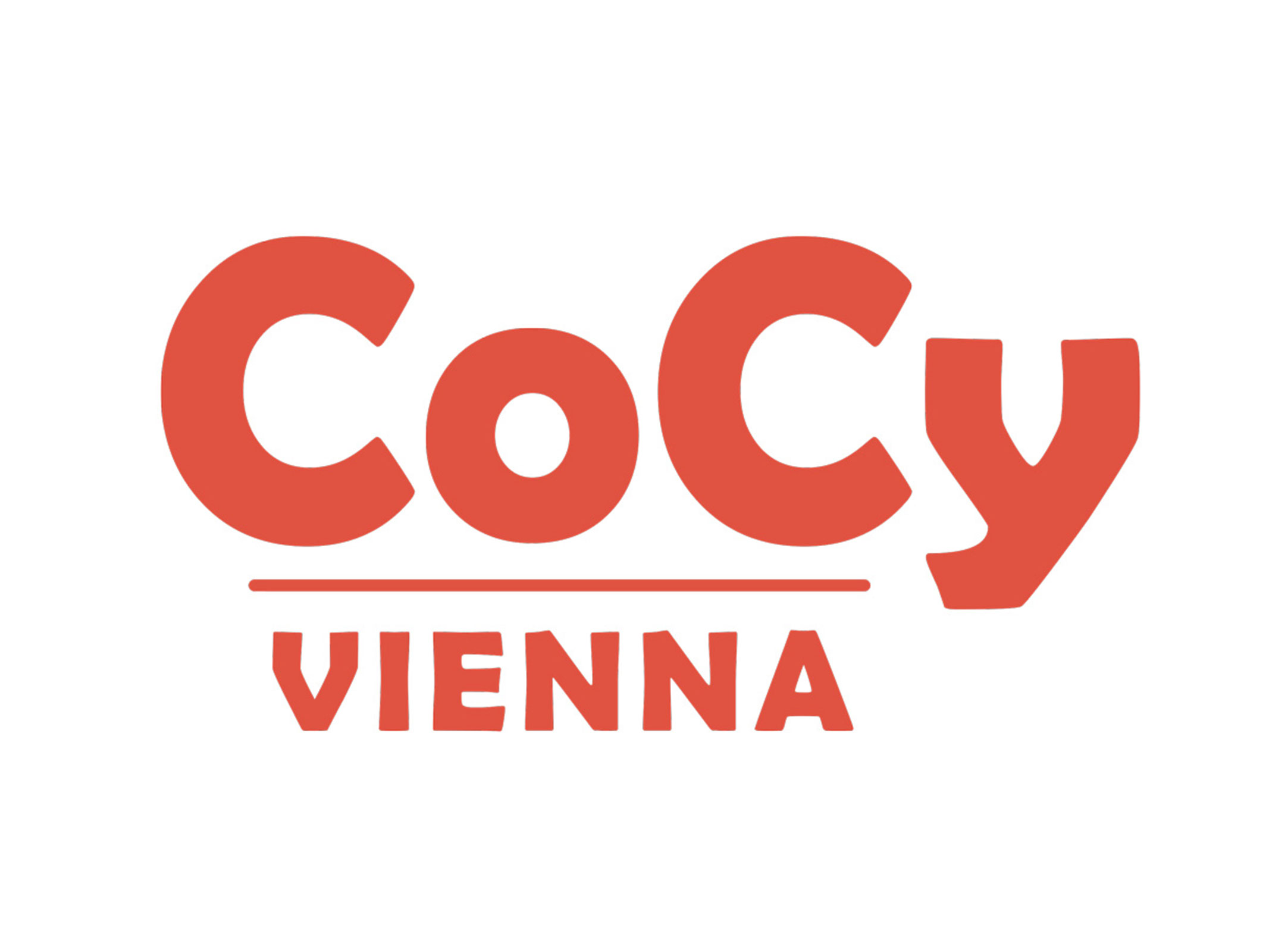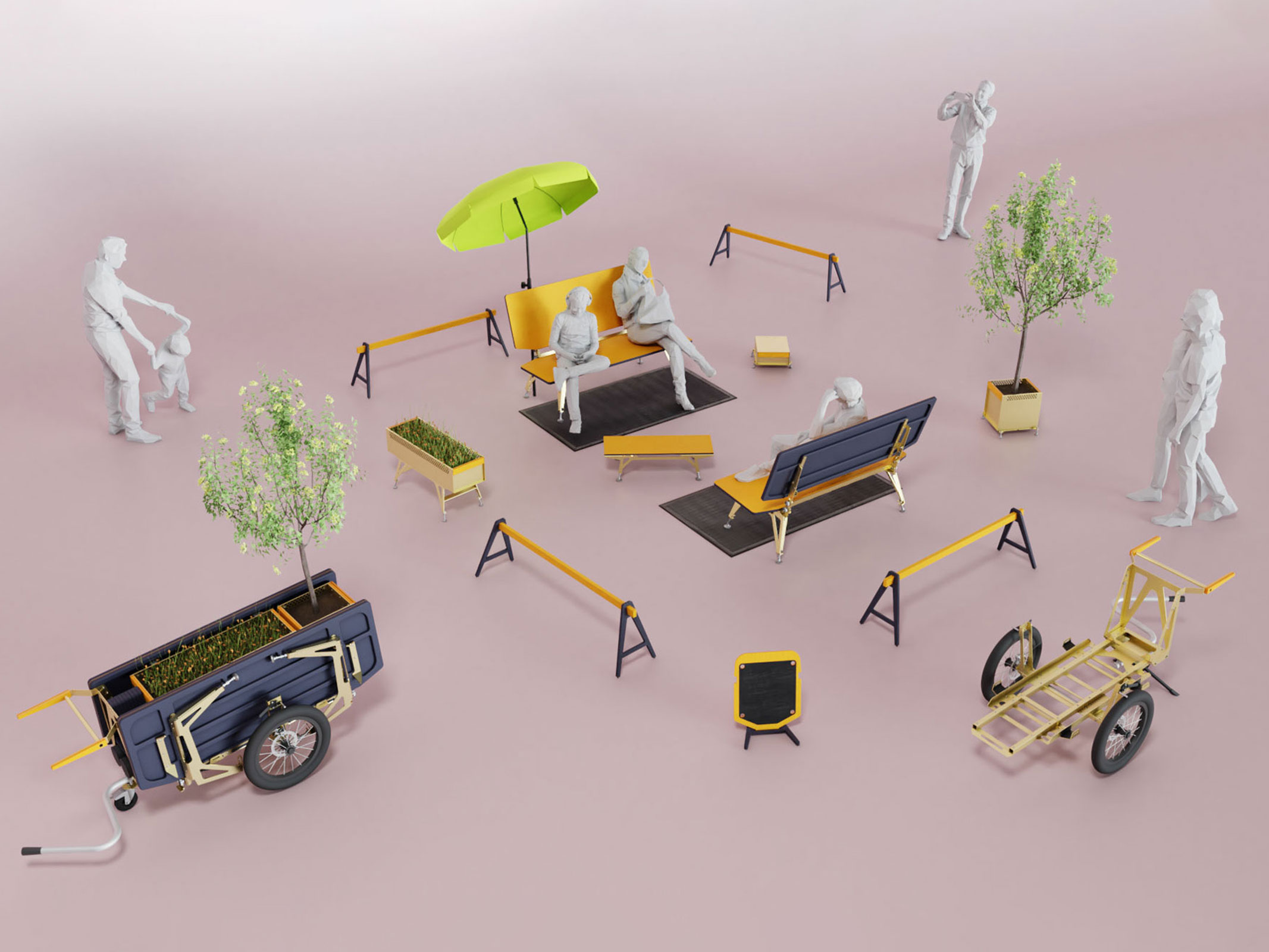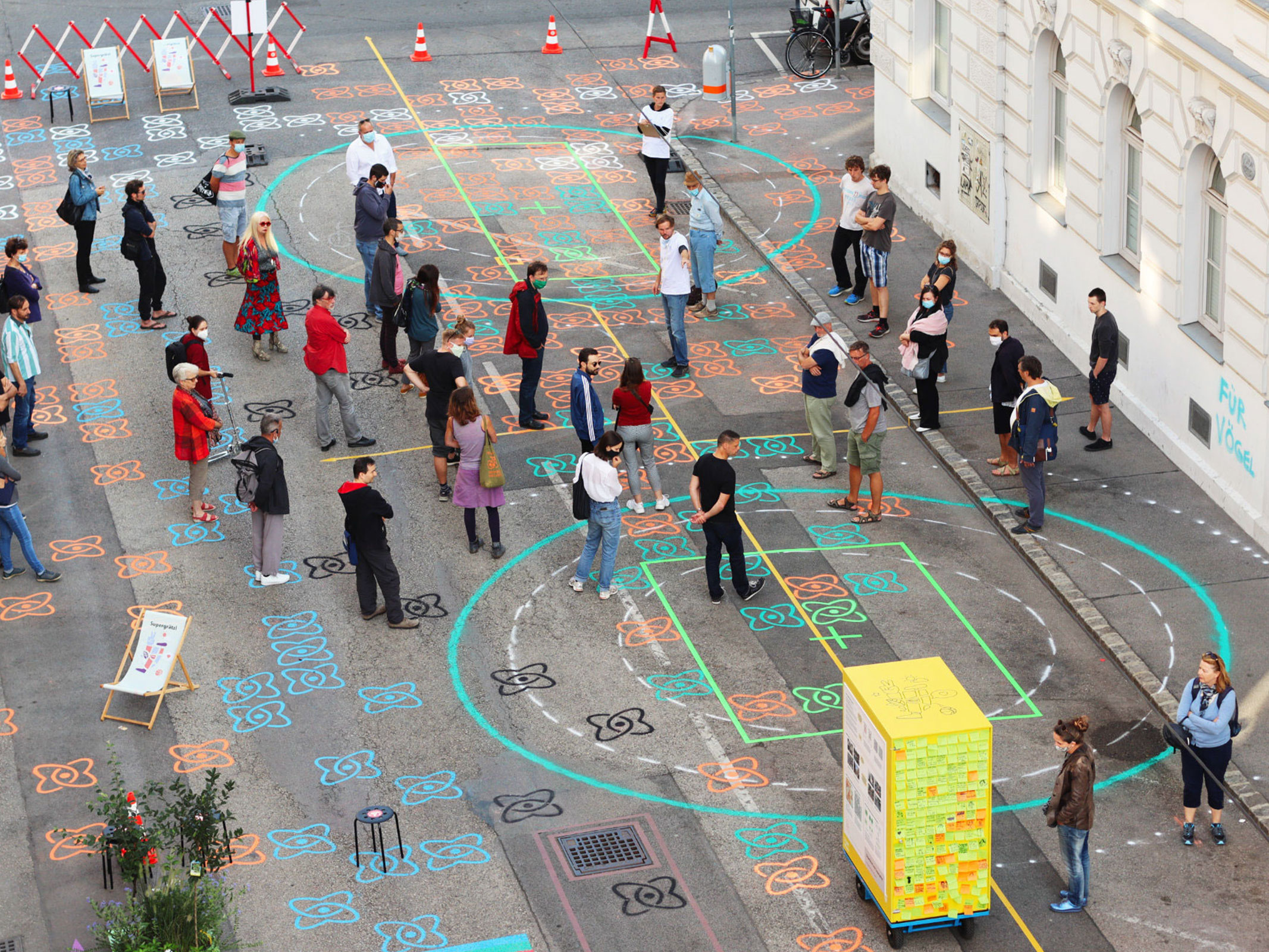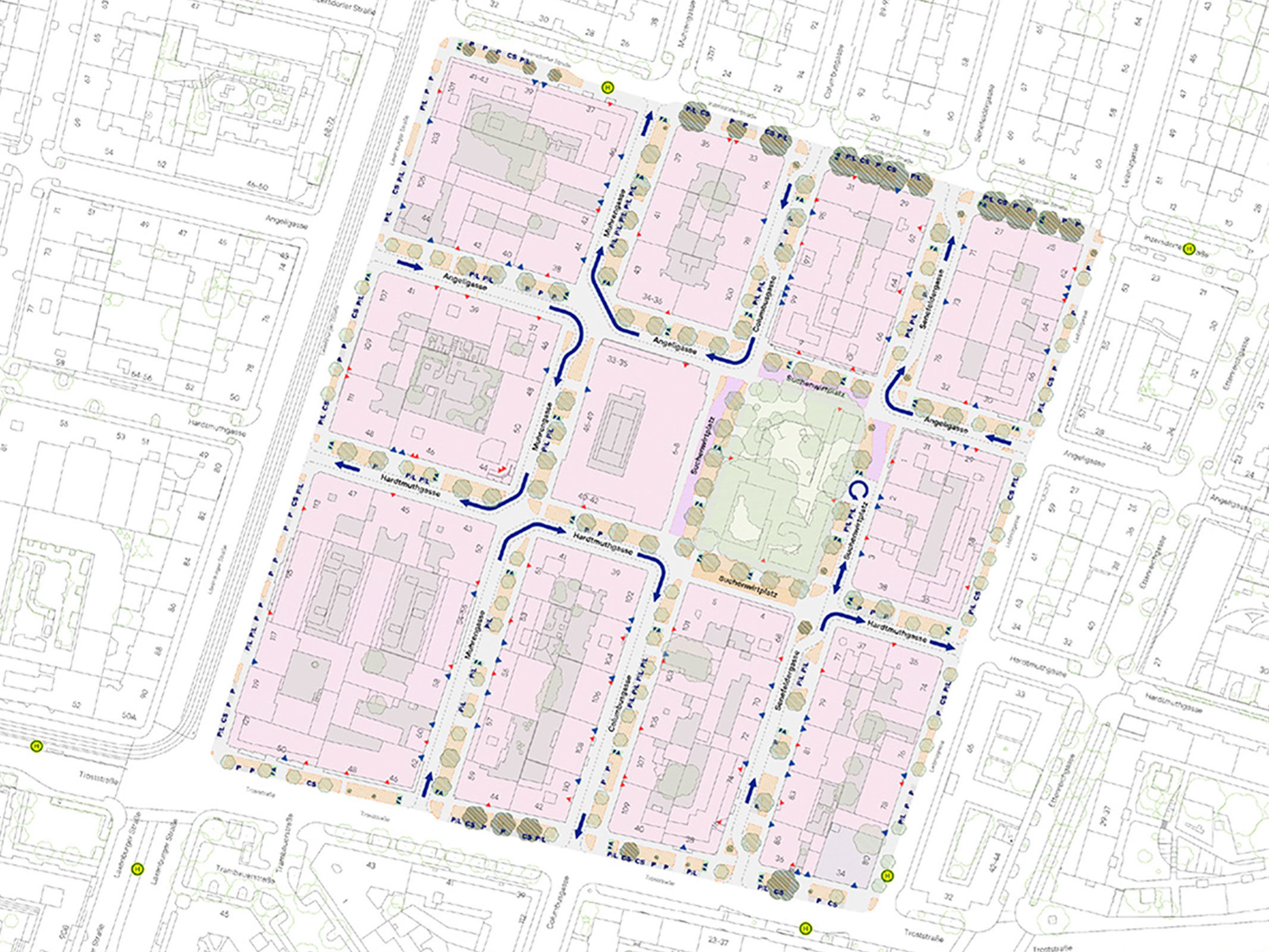As a speculative project the ursupergrätzl proposed a vision for transforming urban street space into an active, lively, and health-promoting habitat for people. The proposal maximizes the principles and possibilities of the superblock concept in an exemplary way for an iconic site in central Vienna, next to the city hall and including the buildings of the city’s urban planning departments and the main building of the University of Vienna.
In the ursupergrätzl, mobility is organized according to the human scale, urban space is mobilized for non-traffic uses, and public space is designed and used collaboratively. Walking, taking a scooter, rolling around with a wheelchair, or riding a bicycle are the default methods for getting around in the ursupergrätzl. By allowing active mobility to move freely whilst redirecting cars, modal filters allow motor vehicle access via one-way loops that prevent motorized through-traffic.
Streets remain easily navigable for delivery and emergency vehicles and house entrances are fully accessible. Dedicated loading zones allow for personal deliveries, emergency services, and construction projects. Public transport connections are easily reached on foot. Mobility sharing services offer on-demand use of motor vehicles. The ursupergrätzl shows that fundamental changes in behavior and quality of life are possible through the strategic redesign of the city’s primary form of public space: streets.
Location: Vienna
Client: MAK – Museum of Applied Arts Vienna
Year: 2021
Project type: speculative project, exhibition contribution
Scale: District
Status: Speculative Project
Team: Georg Wieser, Florian Lorenz
